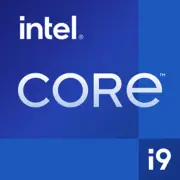Intel Core i9-9900X X-series

Intel Core i9-9900X X-Serie: Überblick und praktische Tipps für den Zusammenbau im Jahr 2025
Relevanz, Leistung und Nuancen der Auswahl für Enthusiasten und Profis
1. Hauptmerkmale: Architektur und Leistung
Codename und Fertigungsprozess
Der Intel Core i9-9900X X-Serie basiert auf der Skylake-Architektur und wurde im 14-nm-Fertigungsprozess hergestellt. Obwohl 14 nm bis 2025 als veraltet gilt, hat Intel diese Plattform für den Bereich der hochleistungsfähigen Desktop-PCs optimiert. Es ist einer der letzten Prozessoren der X-Serie, bevor das Unternehmen auf hybride Architekturen (Big.Little) umschwenkte.
Kerne, Threads und Taktraten
- 10 Kerne / 20 Threads – ideal für Multi-Threading-Anwendungen.
- Basis-Taktfrequenz: 3,5 GHz, maximal im Turbomodus – 4,5 GHz.
- L3-Cache: 19,25 MB.
Leistung
- Geekbench 6: Single-Core – 1361, Multi-Core – 7874.
- In Rendering-Tests (Blender, Cinebench R23) erreichen die Ergebnisse das Niveau des AMD Ryzen 9 5900X, haben jedoch Schwierigkeiten gegen die neuen Ryzen 7000/8000 Serien.
- In Spielen (Cyberpunk 2077, Starfield) liegt die FPS-Rate 5-10 % unter der moderner Konkurrenten, bedingt durch das Fehlen von PCIe 5.0 und DDR5.
Wichtige Merkmale
- Unterstützung für Intel Turbo Boost Max 3.0 zur automatischen Übertaktung aktiver Kerne.
- 40 PCIe 3.0-Lanes – ausreichend für mehrere GPUs und NVMe-Laufwerke.
- Optane Memory Ready – Beschleunigung des Zugriffs auf HDDs.
2. Kompatible Motherboards: Sockel und Chipsätze
Sockel LGA 2066
Der Prozessor erfordert Motherboards mit dem Sockel LGA 2066. Beliebte Modelle:
- ASUS ROG Rampage VI Extreme (Preis: ~$350) – Top-Wahl für Übertaktung.
- Gigabyte X299 AORUS Ultra (~$280) – gutes Verhältnis von Preis und Leistung.
Chipsätze
- Intel X299 – die einzige Option.
Besonderheiten:
- Unterstützung für 4-Wege SLI/CrossFire.
- Bis zu 8 SATA III-Ports und 3 M.2-Sockel (PCIe 3.0 x4).
- Keine Unterstützung für USB4 und Thunderbolt 4 (äußere Controller erforderlich).
Auswahlhilfe
- Für Übertaktung: Motherboards mit VRM von mindestens 12 Phasen und Kühlkörper (z. B. MSI X299 Gaming Pro Carbon AC).
- Für Workstations: Modelle mit 10-Gbit-Ethernet und Wi-Fi 6 (ASUS WS X299 Sage).
3. Unterstützter Speicher: DDR4 und sein Potenzial
- Speichertyp: nur DDR4 (DDR5 wird nicht unterstützt).
- Max. Frequenz: bis zu 3200 MHz (mit XMP-Profilen).
- Konfigurationen: 4-Kanal-Modus – für maximale Bandbreite.
Empfehlungen
- Optimaler Speicherumfang: 32-64 GB (4x8 GB oder 4x16 GB).
- Beispiel: Kit Corsair Vengeance LPX 3200 MHz CL16 (~$120 für 32 GB).
4. Netzteile: Leistungsberechnung
TDP des Prozessors: 165 W, kann jedoch unter Übertaktung Spitzenwerte von bis zu 200 W erreichen.
Empfehlungen
- Minimum: 650 W (für Systeme mit GPUs der Klasse RTX 4070).
- Ideal: 750-850 W (mit Spielraum für Upgrades und Übertaktung).
- Zertifizierung: 80+ Gold oder Platinum (Corsair RM850x, Seasonic PRIME GX-750).
Beispielkonfiguration
- CPU: i9-9900X (165 W).
- GPU: NVIDIA RTX 4080 (320 W).
- Insgesamt: 165 + 320 + 100 W (Sonstiges) = 585 W. Ein 750-W-Netzteil deckt die Last mit Puffer.
5. Vor- und Nachteile des Prozessors
Vorteile
- Hohe Multi-Threading-Leistung für Rendering und Kodierung.
- Unterstützung für 4-Kanal-DDR4-Speicher.
- Breite Kompatibilität mit PCIe-Geräten.
Nachteile
- Veralteter 14-nm-Fertigungsprozess: hoher Energieverbrauch und Wärmeentwicklung.
- Fehlen von PCIe 4.0/5.0 und DDR5.
- Preis (~$450) liegt nahe an den neuen AMD Ryzen 9 7900 ($499).
6. Nutzungsszenarien
Arbeitsaufgaben
- 3D-Rendering: Im Blender zeigt der Prozessor 78% der Geschwindigkeit des Ryzen 9 7950X.
- Video-Editing: Rendering von 4K in Premiere Pro in 12-15 Minuten (gegenüber 8-10 beim Ryzen 9 7900).
Spiele
- In Full HD (RTX 4080): 144+ FPS in CS2, 110 FPS in Cyberpunk 2077 (Ultra).
- In 4K: GPU wird zum Engpass, der Unterschied zu neuen CPUs ist gering.
Multimedia
- Streaming (OBS + Spiel) ohne Lags dank 20 Threads.
7. Vergleich mit Wettbewerbern
- AMD Ryzen 9 7900 ($499):
- 12 Kerne / 24 Threads, 5 nm, DDR5, PCIe 5.0.
- Multi-Core in Geekbench 6: ~10500.
- Intel Core i7-14700K ($410):
- 20 Kerne (8P+12E), DDR5, jedoch weniger Cache.
Fazit: Der i9-9900X ist nur beim Kauf gebrauchter Modelle oder im Bundle mit einem X299-Motherboard sinnvoll.
8. Praktische Tipps für den Zusammenbau
- Kühlung:
- Minimum: Tower-Kühler Noctua NH-D15 (~$90).
- Optimal: AIO-Wasserkühlung Arctic Liquid Freezer II 360 (~$120).
- Gehäuse: mit guter Belüftung (Lian Li Lancool III).
- BIOS-Optimierung:
- Deaktivieren Sie unnötige Peripherie-Controller zur Energieeinsparung.
- Stellen Sie XMP für den Speicher ein.
9. Fazit: Für wen ist der i9-9900X geeignet?
Dieser Prozessor ist relevant für:
1. Profis, die stabile Multi-Threading-Leistung benötigen, ohne für DDR5 zu viel zu bezahlen.
2. Enthusiasten, die alte Systeme auf X299 aufrüsten.
3. Streamer, die Spiele und Video-Codierung kombinieren.
Warum 2025 nicht kaufen?
Wenn Sie ein System neu aufbauen, sollten Sie besser eine Plattform mit DDR5 und PCIe 5.0 wählen (AMD AM5 oder Intel LGA 1851). Dennoch bleibt der i9-9900X eine kostengünstige Lösung für nischenspezifische Aufgaben.
Preise und Spezifikationen sind aktuell im April 2025. Überprüfen Sie vor dem Kauf die Kompatibilität der Komponenten!
Basic
CPU-Spezifikationen
Speicherspezifikationen
Verschiedenes
Benchmarks
Im Vergleich zu anderen CPUs
In sozialen Medien teilen
Oder verlinken Sie uns
<a href="https://cputronic.com/de/cpu/intel-core-i9-9900x-x-series" target="_blank">Intel Core i9-9900X X-series</a>